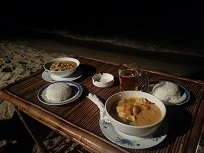A Rubber Production
This summer I am interning with Open Development Cambodia (ODC)(www.opendevelopmentcambodia.net), an NGO dedicated to providing “open data” to the public. ODC collects publicly available data from a variety of sources and makes it accessible to anyone for their use, reuse, and redistribution. ODC does not take a stance on the content it publishes, but rather seeks to provide objective data about development in Cambodia (and, in the near future, the greater Mekong region).
The ODC website currently focuses on a number of environmental and economic topics related to Cambodia’s development, including Economic Land Concessions (ELCs), forest cover, hydropower, and mining. Seeking to expand beyond Cambodia, ODC has launched a new website, Open Development Mekong, which, when finished, will provide similar information for the region. I have been tasked with working on this regional website, and my first assignment of the summer has involved researching the rubber industry in Cambodia, Laos, Myanmar, Thailand and Vietnam. The rubber industry in the region has expanded rapidly over the last decade, and ODC seeks to provide information on the expansion within each country and the region as a whole. As part of my research, I have looked at the history of rubber in the region (which, for the most part, dates to the French Colonial period of the early 1900s), as well as the current acreage and annual production of rubber plantations in each of the five countries (Thailand is the number one rubber producer in the world, producing approximately 1/3 of the world’s rubber supply). In addition to these overall production numbers, I have looked at the different types of plantations in the region, such as smallholder production, contract farming, and large scale land concessions, and what their distribution is within countries and across the region. I have also focused on trends in the region (such as the expansion of rubber into previously unsuitable areas), the potential benefits and consequences of expansion of rubber production, and any laws that may affect production in each country. The goal is to provide a broad overview of the rubber industry in the region which can then be further developed and expanded upon in the country pages once they are created.
In addition to our individual research projects, Ross and I have been assisting the Cambodian staff in their review of the Economic Land Concessions database. By pairing a native English speaker and a native Khmer speaker to review the supporting documents, we are striving to make sure that the information available to the public is the most accurate and up to date.
Speaking of staff, we are fortunate to be working with a wonderful group of individuals at ODC. Everyone has been incredibly nice and welcoming, and one of the most rewarding parts of this experience has been getting to know the people and hear their stories. They all have such interesting backgrounds, are incredibly intelligent, and are very dedicated to their work.
When not in the office, we have enjoyed exploring the food and culture of Phnom Penh. These first couple of weeks have been somewhat of a foodie’s dream, as we have sampled a wide variety of cuisines. In addition to trying traditional Khmer dishes, such as amok and luk lak, we have partaken of Thai, Chinese, Vietnamese, Japanese, Indonesian, Filipino, Indian, and Nepalese meals. All have been delicious! Besides eating, which in itself is an experience, after work we have also checked out a number of cultural events, including an art exhibit at the German-Cambodian art house and a poetry event at a local coffee shop, featuring poets from all over the world presenting their works in Khmer, English, French and Spanish. There is so much to see and do, and I can’t wait to see what the rest of the summer has in store!
